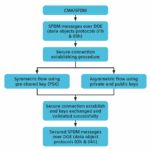In a major announcement at the 2025 Design Automation Conference (DAC), Siemens EDA introduced a significant expansion to its electronic design automation (EDA) portfolio, aimed at transforming how engineers design, validate, and manage the complexity of next-generation three-dimensional integrated circuits (3D ICs).… Read More
Tag: Siemens EDA
Podcast EP293: 3DIC Progress and What’s Coming at DAC with Dr. John Ferguson and Kevin Rinebold of Siemens EDA
Dan is joined by Dr. John Ferguson, Director of Product Management for the Calibre nmDRC and 3DIC related products for Siemens EDA. John has worked extensively in the area of physical design verification. Holding several patents, he is also a frequent author in the physical design and verification domain. Current activities … Read More
Siemens EDA Outlines Strategic Direction for an AI-Powered, Software-Defined, Silicon-Enabled Future
In a keynote delivered at this year’s Siemens EDA User2User event, CEO Mike Ellow presented a focused vision for the evolving role of electronic design automation (EDA) within the broader context of global technology shifts. The session covered Siemens EDA’s current trajectory, market strategy, and the changing landscape … Read More
Metal fill extraction: Breaking the speed-accuracy tradeoff
As semiconductor technology scales and device complexity increases, accurately modeling the parasitic effects of metal fill has become critical for circuit performance, power integrity, and reliability. Metal fill is a crucial part of the manufacturing process, ensuring uniform layer density, improving planarization,… Read More
Intel Foundry Delivers!
Now that the dust has settled, I will give you my take on the Intel Foundry event. Some might call me a semiconductor event critic as I have attended hundreds of them over the last 40 years starting with the Design Automation Conference in 1984. Foundry events are my favorite because they really are the pulse of the semiconductor industry,… Read More
Alphawave Semi is in Play!
We started working with Alphawave at the end of 2020 with a CEO Interview. I had met Tony Pialis before and found him to be a brilliant and charismatic leader so I knew it would be a great collaboration. Tony was already an IP legend after his company was acquired by Intel. After 4+ years at Intel Tony co-founded Alphawave in 2017. Today,… Read More
Averting Hacks of PCIe® Transport using CMA/SPDM and Advanced Cryptographic Techniques
In today’s digital landscape, data security has become an indispensable feature for any data transfer protocol, including Peripheral Component Interconnect Express (PCIe). With the rising frequency and sophistication of digital attacks, ensuring data integrity, confidentiality, and authenticity during PCIe transport… Read More
Electrical Rule Checking in PCB Tools
I’ve known about DRC (Design Rule Checking) for IC design, and the same approach can also be applied to PCB design. The continuous evolution of electronics has led to increasingly intricate PCB designs that require Electrical Rule Checking (ERC) to ensure that performance goals are met. This complexity poses several challenges… Read More
Innexis Product Suite: Driving Shift Left in IC Design and Systems Development
At the heart of the shift-left strategy is the goal of moving traditionally late-stage tasks—such as software development, validation, and optimization—earlier in the design process. This proactive approach allows teams to identify and resolve issues before they escalate, reducing costly rework and shortening the overall… Read More
Prioritize Short Isolation for Faster SoC Verification
Improve productivity by shifting left LVS
In modern semiconductor design, technology nodes continue to shrink and the complexity and size of circuits increase, making layout versus schematic (LVS) verification more challenging. One of the most critical errors designers encounter during LVS runs are shorted nets. Identifying… Read More










